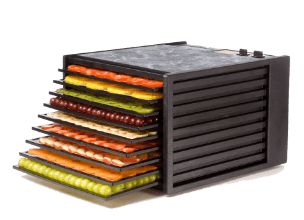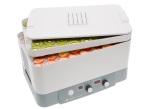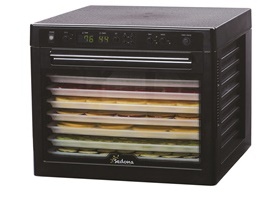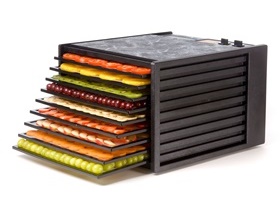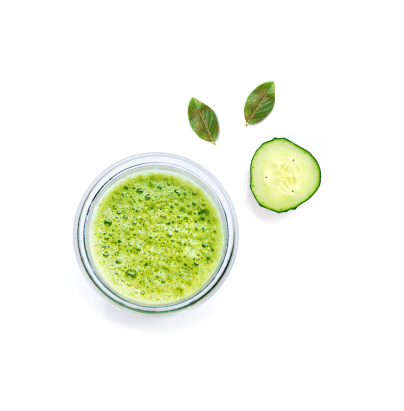Choosing Your Dehydrator
Choosing Your Dehydrator
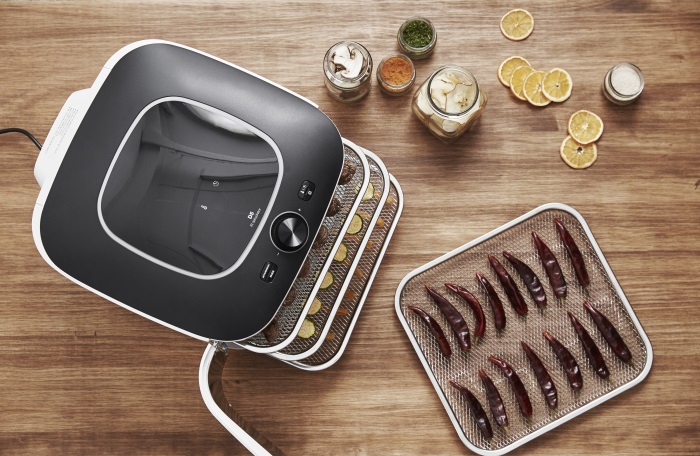
UK Juicers has supplied many thousands of food dehydrators over the years to all kinds of clients from Michelin-starred chefs and restaurants, to gardeners and growers, expedition leaders and outdoors enthusiasts (including our friend Gary Rolfe the Arctic explorer). We’ve supplied hobbyists, artists, jewellery makers, pub landlords, people who make pet snacks and, probably our biggest client group, Raw and Living Foods aficionados. There are many reasons for people to be interested in what they can do with a dehydrator and there are a few need to know differences between the models and types in order to make the right choice for you.
The Importance of Temperature Control
All our dehydrators come with the advantage of being able to adjust the drying temperature, offering the versatility to prioritise different desired results. For example, anyone wishing to dry fish or meat will want to be able to use the higher drying temperatures initially, for food hygiene purposes. Those interested in living foods will want to dry fruits and vegetables at lower temperatures to preserve the maximum of nutrients and enzymes. Dehydrators with inaccurate or no control of the drying temperature will generally dry at the higher end of the temperature range and although they may be cheaper, they are not suitable for those who are looking to optimise the nutrient preservation in the food. Hotter temperatures are also less suitable for preserving the delicate aromas and essential oils when drying some foods, herbs and flowers.
The 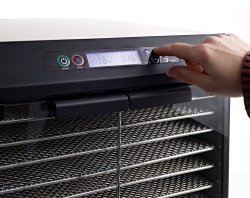 accuracy of the temperature control is determined by the design of the thermostat, the dehydrator type, and the air flow when it is operating under load. Some are more accurate than others but it is always worth having a thermometer to check what’s going on in if it is a particular concern. For the purposes of anyone following a raw foods lifestyle, the accuracy of temperature control can take on a lot of importance because most raw fooders are concerned with optimum nutrition and want to preserve heat sensitive nutrients and enzymes. All our models are chosen to be suitable for the raw and living food lifestyle. (Please note, although all our dehydrators offer relatively accurate drying temperatures, wherever there are any potential food safety issues we recommend the use of a digital thermometer to confirm the food temperature when drying.)
accuracy of the temperature control is determined by the design of the thermostat, the dehydrator type, and the air flow when it is operating under load. Some are more accurate than others but it is always worth having a thermometer to check what’s going on in if it is a particular concern. For the purposes of anyone following a raw foods lifestyle, the accuracy of temperature control can take on a lot of importance because most raw fooders are concerned with optimum nutrition and want to preserve heat sensitive nutrients and enzymes. All our models are chosen to be suitable for the raw and living food lifestyle. (Please note, although all our dehydrators offer relatively accurate drying temperatures, wherever there are any potential food safety issues we recommend the use of a digital thermometer to confirm the food temperature when drying.)
When high moisture content living foods are being dehydrated, it is often recommended that up to the first three hours of drying are at a higher setting – up to as much as 60°C (140°F) – because this will prevent spoiling without destroying enzymes in the early stages of drying
A Note for Raw and Living Foods Enthusiasts on Temperatures and Nutrient Preservation
All dehydrators will have varying air temperatures inside them when drying but the important thing here is what is going on with the temperature of the food being dried. Because of the cooling effect of evaporation of moisture from within the food, the temperature of the food will generally be more stable and at a slightly lower temperature than the air that is drying it. This is less true when the moisture is mostly removed towards the end of drying, but fortunately enzymes are less sensitive to heat when they are dry.
Because 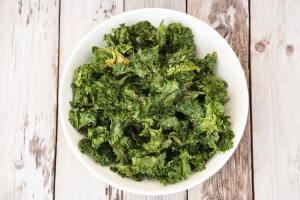 of these factors, its not a real issue if you set a dehydrator at say 40°C (105°F) and then find that the air temperature varies up to as high as 50°C (125°F). When the dehydrator is at the hot end of the thermostat cycle, moisture is evaporating from the surface of the food and cooling it down more. Then when the air temperature drops, moisture is being drawn from the centre of the food outwards, so the food temperature stays relatively even throughout. Enzymes and other nutrients will survive in any of our dehydrators at the correct setting and we offer a temperature probe if you want to fine tune the settings.
of these factors, its not a real issue if you set a dehydrator at say 40°C (105°F) and then find that the air temperature varies up to as high as 50°C (125°F). When the dehydrator is at the hot end of the thermostat cycle, moisture is evaporating from the surface of the food and cooling it down more. Then when the air temperature drops, moisture is being drawn from the centre of the food outwards, so the food temperature stays relatively even throughout. Enzymes and other nutrients will survive in any of our dehydrators at the correct setting and we offer a temperature probe if you want to fine tune the settings.
Vertical or Horizontal Drying?
Or to put it another way, do you want a dehydrator that has stacking trays or horizontal shelves like a conventional oven? Having dealt with temperature control we come to the biggest distinguishing feature that influences choice for most people.
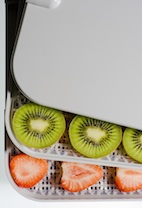 A stacking tray dehydrator usually has a heating element and fan at its base which blows warmed air upwards through a stack of drying trays. There are a few advantages to this type. Firstly, from the various Stockli Dehydrator models through to the digital L’Equip Filterpro Dehydrator, stacking tray models generally come in at a significantly lower price point. Secondly, they also generally have a smaller footprint than the most popular models in the horizontal category, so if you are pushed for space a stacking model is a good choice. The third and possibly the biggest advantage stacking dehydrators offer is that they are expandable by adding extra trays. Want more drying space? Add trays and you have a bigger dehydrator. You only ever have a drying volume that corresponds to your needs, by adding or removing trays. This can be more energy efficient. With a horizontal ‘oven’ style model, the drying volume is fixed.
A stacking tray dehydrator usually has a heating element and fan at its base which blows warmed air upwards through a stack of drying trays. There are a few advantages to this type. Firstly, from the various Stockli Dehydrator models through to the digital L’Equip Filterpro Dehydrator, stacking tray models generally come in at a significantly lower price point. Secondly, they also generally have a smaller footprint than the most popular models in the horizontal category, so if you are pushed for space a stacking model is a good choice. The third and possibly the biggest advantage stacking dehydrators offer is that they are expandable by adding extra trays. Want more drying space? Add trays and you have a bigger dehydrator. You only ever have a drying volume that corresponds to your needs, by adding or removing trays. This can be more energy efficient. With a horizontal ‘oven’ style model, the drying volume is fixed.
There’s a fourth and unique advantage to considering the L’Equip Filterpro Dehydrator because it has a simple washable air filter in its base. With this model the air used for drying your food first passes through a filter to remove dust and particles. This is such an obvious advantage in any environment where dust may be an issue and it’s surprising that it was such a novelty when the Filterpro was designed. Recently the futuristic CI Infrared Dehydrator has also taken this approach.
One aspect of some stacking dehydrators is the issue of temperature gradients, particularly when using extra trays. If you have more than the standard supplied trays in use there can be a difference in drying temperature between the upper and lower trays, so you may want to monitor the drying period so that you can periodically swap the trays up or down to achieve more even drying. If you like to keep an eye on what is going on during drying anyway, this might not be such an issue but if you would prefer to just set it and forget it, horizontal air flow dehydrators will deliver more even results for slightly less user involvement.
You also generally have to take care with wet ingredients in a stacking model to ensure that no liquid is spilled into the dehydrator base where the fan and heating element are located, but for most people this is not an issue. Stockli Dehydrators offer an economical introduction to dehydrating foods and if you dry small batches the need to move the trays around is lessened. The L’Equip Filterpro Dehydrator is the slightly more efficient, premium choice of stacking dehydrator with digital control and an air filter. The L’Equip also has less of a problem with tray rotation than other stacking models.
With horizontal air flow, the maximum (and minimum) capacity is fixed by the size of the ‘box’ that the shelves are housed in.
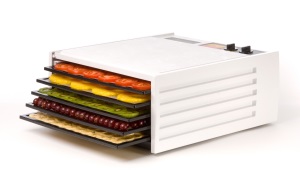 Horizontal dehydrators usually have one or more fans and heating elements at the rear of an oven-like box and they blow warmed air horizontally across the tray surfaces. They usually have between 5 and 10 trays, so choose one that gives the largest drying area that you think you are likely to need. Horizontal air flow generally gives even drying without the need to move things around during the drying period. This means the temperature is stable throughout the drying area, whereas a stacking dehydrator can sometimes be slightly cooler in the higher trays. If you need to dry something that is larger than the gap between two shelves, for example half a large tomato or a large flower, you can just remove a shelf to give extra depth in the horizontal models, whereas tray depth is fixed in the stacking type.
Horizontal dehydrators usually have one or more fans and heating elements at the rear of an oven-like box and they blow warmed air horizontally across the tray surfaces. They usually have between 5 and 10 trays, so choose one that gives the largest drying area that you think you are likely to need. Horizontal air flow generally gives even drying without the need to move things around during the drying period. This means the temperature is stable throughout the drying area, whereas a stacking dehydrator can sometimes be slightly cooler in the higher trays. If you need to dry something that is larger than the gap between two shelves, for example half a large tomato or a large flower, you can just remove a shelf to give extra depth in the horizontal models, whereas tray depth is fixed in the stacking type.
Horizontal airflow is more suited to drying wet ingredients or mixes, purees and liquids. These need to be dried on some kind of solid or non-stick tray or drying sheet because they would either drip through or stick to the mesh tray inserts in most food dehydrators. If you place a puree tray or non stick sheet on a tray in a stacking dehydrator, you reduce the airflow a little and generally speaking you can use less tray area for very wet ingredients in the stacking type as a consequence. A non stick sheet like the Excalibur Paraflexx Sheet offers very little resistance to the warm air as it blows across the trays in a horizontal dehydrator, so this makes for more even, controlled dehydrating.
If you want to use the controlled temperature in your dehydrator to turn it onto a yoghurt maker, it’s easier to take out the shelves and put a good sized container in a horizontal air flow dehydrator than it is to use shallow yoghurt pots in the stacking type. If you want to make a chunky sprouted seed loaf, or just to warm up a raw nut and seed ‘roast’, you will need the horizontal type.
Our most popular horizontal dehydrators are the long established Excalibur Dehydrator range and our premium choice for customers who want even greater versatility is the Tribest Sedona Dehydrator. If you love great design and technology and if you prefer a slightly smaller dehydrator than the Sedona, the IR D5 Infrared Food Dehydrator is another premium option.
Dehydrator With Timer
These are useful if you need to leave the drying ingredients unattended and you want to ensure that it switches off after a certain drying period.
Dehydrating 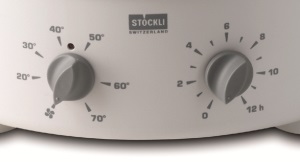 is not an exact art because drying times vary depending on the surrounding humidity and temperature as well as the moisture content of the ingredients. However, if you have a particular routine where you use familiar recipes, a timer can be handy because you can achieve a more predictable result without intermediate monitoring of the progress. If you are likely to be around and able to monitor the progress of the ingredients as they dry, a timer that switches off the unit at a certain time is less necessary.
is not an exact art because drying times vary depending on the surrounding humidity and temperature as well as the moisture content of the ingredients. However, if you have a particular routine where you use familiar recipes, a timer can be handy because you can achieve a more predictable result without intermediate monitoring of the progress. If you are likely to be around and able to monitor the progress of the ingredients as they dry, a timer that switches off the unit at a certain time is less necessary.
Timers come in 12, 24, 26 or 99 hour versions throughout our range. If you choose a non-timer version and regret it later this is not a big problem because you can pick up a plug-in timer economically at most DIY stores.
Electricity Consumption
This is not a straightforward consideration when choosing, but the variations are relatively small and none of our dehydrator models will break the bank with big energy bills. We recently did a power test on a large Excalibur running at the 60ºC setting and power consumption was 0.342 kilowatts per hour. In the UK that equates to a running cost of a few pennies per hour, depending on your electricity supplier.
You might first assume that the one with the most powerful heating element uses most electricity but this is not necessarily the case. The temperature is controlled by a thermostat, so while a larger heating element will draw more power when it is on, it won’t necessarily draw that power for as long as a smaller heater when it is getting up to temperature. When the heating element is not heating, there can be some variation in the power needed by just the fan on its own but most fans won’t draw more than a low energy lightbulb.
There  are two factors that will have a larger impact on the electricity used than the choice of model. Firstly, the surrounding environment can lead to different power consumption at different times of the year because of varying ambient temperature and humidity. If you have the dehydrator in your kitchen this is not as big a factor as if you locate it outside in a cool garage, for example. Secondly, electricity consumption is going to be largely influenced by the size of the batch you want to dehydrate and how moist the ingredients are. A bigger load of ingredients will have a bigger cooling effect on the warm air in the dehydrator, so the heater will need to be on for a higher proportion of total drying time. For this reason, when you are choosing between say a 5 tray or a 9 tray horizontal dehydrator, electricity use is not as much of a factor as you might think, because the larger model will still use less power when drying just a few trays, as there is a smaller cooling effect from the food. One of the big advantages of dehydrating your own food is that it allows you to dry in bulk when ingredients are cheap or in season if you are a home grower, so a bigger dehydrator will be slightly more economical for full loads. However, if you only ever want to dry small batches, then a smaller dehydrator will be a bit more easy on the fuel bill, and a bit greener in the longer term.
are two factors that will have a larger impact on the electricity used than the choice of model. Firstly, the surrounding environment can lead to different power consumption at different times of the year because of varying ambient temperature and humidity. If you have the dehydrator in your kitchen this is not as big a factor as if you locate it outside in a cool garage, for example. Secondly, electricity consumption is going to be largely influenced by the size of the batch you want to dehydrate and how moist the ingredients are. A bigger load of ingredients will have a bigger cooling effect on the warm air in the dehydrator, so the heater will need to be on for a higher proportion of total drying time. For this reason, when you are choosing between say a 5 tray or a 9 tray horizontal dehydrator, electricity use is not as much of a factor as you might think, because the larger model will still use less power when drying just a few trays, as there is a smaller cooling effect from the food. One of the big advantages of dehydrating your own food is that it allows you to dry in bulk when ingredients are cheap or in season if you are a home grower, so a bigger dehydrator will be slightly more economical for full loads. However, if you only ever want to dry small batches, then a smaller dehydrator will be a bit more easy on the fuel bill, and a bit greener in the longer term.
Another thing that influences the power used is how often you want to check whats going on by opening the dehydrator, or by rearranging the trays in a stacking type, because every time open the unit it will have to reheat to the set temperature. Transparent doors cut down on heat loss when you want to make a visual check of progress in some horizontal dehydrator models, which can cut the fuel bill a little. There are two separately controlled fans and heating zones in the Sedona, sat vertically above one another and it comes with a dividing tray which allows you to dry a half load using just one fan and one heater for greater economy. This model also has a ‘night mode’ which cuts power consumption a little more while also reducing noise, which leads us to the next factor that some users may want to consider. Several models including the Brod & Taylor Sahara™ Folding Dehydrator also have twin heating elements so that the power delivery can be optimised for economy.
Noise Levels
Noise perception is a subjective matter and people have different levels of tolerance for any background noise. For that reason these are just broad guidelines to help you choose and if you end up thinking you should have bought a quieter model after you have chosen, you can change your mind and swap it painlessly with our easy returns service.
If you are going to site your dehydrator in a noise sensitive area, say in a kitchen next to a bedroom, noise will be more of a concern. If you are going to locate the dehydrator in a utility area or garage, then noise is less of a factor.
The Sedona Food Dehydrator by Tribest is amongst the quietest, as you would expect from a premium choice like this. It is even quieter running on one fan while in ‘night mode’, so noise is really not an issue for most people with this model.
 Another of the quietest in our range is the L’Equip Filterpro Dehydrator and again this is usually quite acceptable in most kitchens or utility areas.
Another of the quietest in our range is the L’Equip Filterpro Dehydrator and again this is usually quite acceptable in most kitchens or utility areas.
This is on a par with the innovative IR D5 Infrared dehydrator for noise.
Third quietest are the Stockli Dehydrators and we are approaching a noise level with these that most people would want to locate away from any sleeping area for overnight use. You could compare the noise level to an average desktop computer hard drive cooling fan.
Next comes the Excalibur Dehydrator range and this is slightly louder again. As a rough guide, they sound somewhat like an average fan oven so these are more suited to utility areas or even being located in a garage if the sound proofing between rooms is not good. Being the loudest in the range certainly hasn’t prevented the Excalibur from being our best selling dehydrator by far and most people can accommodate the noise level. The Excalibur is still the dehydrator of choice for most raw and living foods enthusiasts.
Summary of the Different Brands of Dehydrator
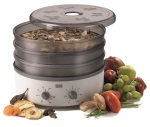 These reliable Swiss stacking models offer an economical introduction to the world of dehydrating foods. If you want to dry small batches they are great and have a small footprint if you are pushed for space. If you don’t mind moving the trays about during drying you can add extra trays (up to 10 trays) to increase capacity. Available with or without a 12 hour timer with a choice of plastic or stainless steel mesh trays.
These reliable Swiss stacking models offer an economical introduction to the world of dehydrating foods. If you want to dry small batches they are great and have a small footprint if you are pushed for space. If you don’t mind moving the trays about during drying you can add extra trays (up to 10 trays) to increase capacity. Available with or without a 12 hour timer with a choice of plastic or stainless steel mesh trays.
Another expandable (up to 20 trays) stacking dehydrator with a few extra bells and whistles such as a digital display with 24 hour countdown timer and a washable air filter for clean air drying. The Filterpro is also a bit quieter than the Stockli and in our opinion it is the best value overall in our range as it is extremely reliable in long term use.
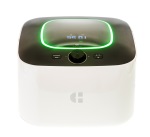 Technically this is also a L’Equip dehydrator but due to international licensing issues the IR D5 is marketed in Europe under the Counter Intelligence brand. If Apple were to design dehydrators they’d probably end up looking like this technologically advanced model. With a truly kitchen friendly design and a capacity almost perfectly suited to the typical user, the IR D5 is the first model to offer infrared drying which is said to preserve even more of the original food flavours and aromas.
Technically this is also a L’Equip dehydrator but due to international licensing issues the IR D5 is marketed in Europe under the Counter Intelligence brand. If Apple were to design dehydrators they’d probably end up looking like this technologically advanced model. With a truly kitchen friendly design and a capacity almost perfectly suited to the typical user, the IR D5 is the first model to offer infrared drying which is said to preserve even more of the original food flavours and aromas.
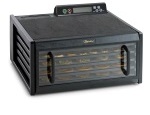 Our most popular range with a heritage stretching back for over 30 years. The Excalibur Dehydrator is still the most popular choice for raw fooders and it’s the best known brand in the world. Horizontal drying means no need for tray rotation, available with or without 26 hour timer in 5 or 9 tray versions.
Our most popular range with a heritage stretching back for over 30 years. The Excalibur Dehydrator is still the most popular choice for raw fooders and it’s the best known brand in the world. Horizontal drying means no need for tray rotation, available with or without 26 hour timer in 5 or 9 tray versions.
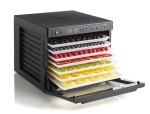 A premium choice horizontal air flow dehydrator with a host of useful extra features and offering near-silent operation. The tempered glass door gives you a view of the food without heat loss, it can be divided to half size with a divider tray for more economical small batch drying. The temperature and the 99 hour dual timer are digitally controlled. The Sedona Combo Dehydrator is the latest version offering dual temperature timer control. Tribest Dehydrators have also recently been supplemented by two more compact Sedona Express models for those who have a bit less space available for a dehydrator.
A premium choice horizontal air flow dehydrator with a host of useful extra features and offering near-silent operation. The tempered glass door gives you a view of the food without heat loss, it can be divided to half size with a divider tray for more economical small batch drying. The temperature and the 99 hour dual timer are digitally controlled. The Sedona Combo Dehydrator is the latest version offering dual temperature timer control. Tribest Dehydrators have also recently been supplemented by two more compact Sedona Express models for those who have a bit less space available for a dehydrator.
Brod & Taylor Sahara™ Folding Dehydrator
With all the technologicl bells and whistles you could wish for, this quiet dehydrator offers stainless trays, a glass door, twin heaters and a dual stage timer. It’s game changer feature is that when not in use it folds flat for easy storage – why didn’t anyone else think of that sooner? The ultimate space saver dehydrator comes in a size that will suit the highest number of users with about a square metre of total drying area.
If you want any more information on the pros and cons of the different choices, you will probably find it in the Dehydrator FAQs page. Remember you can call us in normal office hours on 01904 757070 to discuss your requirements.
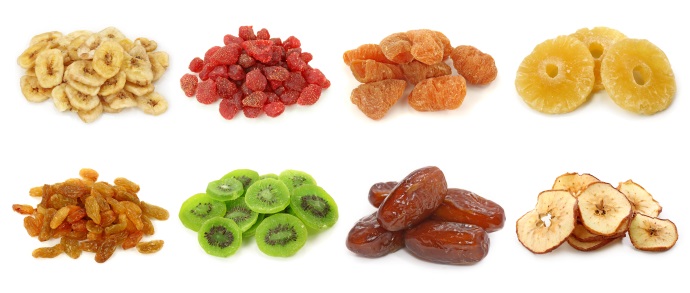
 Register / Login
Register / Login 





